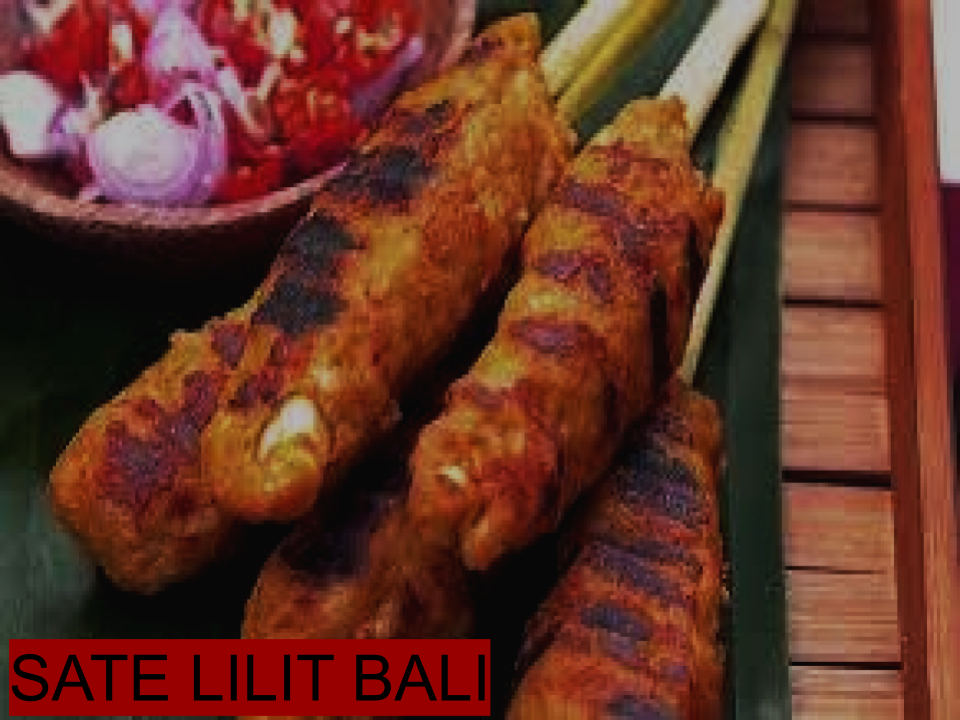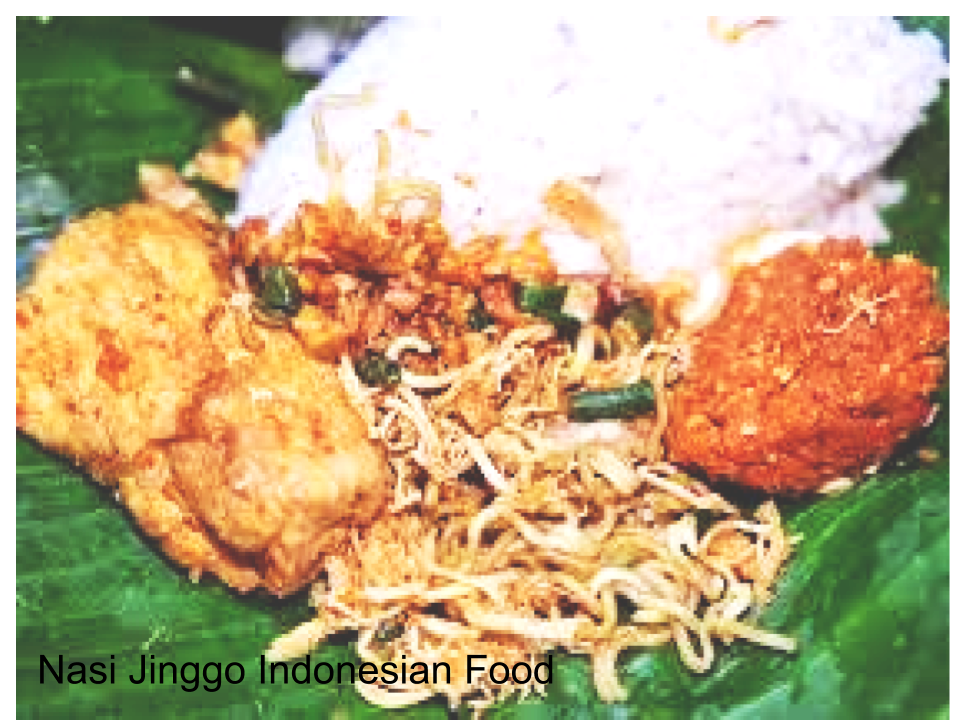Barongko Cake Is a Typical Indonesian Food From South Sulawesi
Makassar besides being famous for its marine tourism, it is also famous for its cuisine. There are also many traditional cakes originating from this area. But there is one that is famous for a long time as a dish for kings in South Sulawesi. The cakes that are usually served at these traditional events still exist and are a favorite of all, Barongko's cake is called.

One of the philosophical reasons that Barongko often presents at banquets is because of the meaning contained in Barongko. Barongko is made from bananas, wrapped in banana leaves so that when the host of the house offers Barongko to the guest, there is a message that the host presents "honesty" what is outside the same as inside. Like Barongko, inside is a banana and the outside is also part of a banana. Regardless of whether or not it is philosophical, Barongko does have a legitimate taste.
Savory, sweet and delicious as the first sensation that dances on the tongue when tasting this one traditional Bugis cake. How to make Barongko is easy but requires patience. Usually before making the dough, first make a mold or wrapper made of banana leaves. Many people believe that the distinctive aroma of Barongko comes from the banana leaves that wrap it.
After the mold is ready, the ingredients for making Barongko are like mashed bananas, eggs, coconut milk, and sugar, mixed together to form a soft dough. The dough can also be modified by adding diced jackfruit, slices of young coconut meat or grated cheese. A spoonful after a spoonful of dough is put into a banana leaf mold, then pinned with a stick or tied. After that steamed until cooked.
Some people like to enjoy Barongko which is still warm. But many say Barongko is more enjoyable when it's cold, especially when it's just taken out of the refrigerator. Its sweet taste and soft texture like pudding make this cake popular with many people.
In the past Barongko was a luxury food and was only served on royal occasions, now it can be found in traditional markets. Some cafes and hotels in Makassar also served it. This cake is easier to find in the month of Ramadan because it is a favorite menu of iftar.
Ingredients:
20 kapok bananas
3 eggs
100 grams of sugar
½ teaspoon salt
1/2 tsp of vanilla powder
250ml thick coconut milk
2 pieces of pandan leaves
Banana leaves to taste (to wrap)
2. Shake off the chicken egg and then put it in a container containing banana and coconut milk that has been blended
3. Then add the sugar, salt & vanilla powder, mix well
4. Take a banana leaf and then form it like when we make a Botok, enter the pieces of pandan leaves and then take the mixture of about one cup of input into the leaf and then put it together with a strapless, or stick with a stick.
5. Do the same until the dough runs out.
6. Steam the barongko cake for about 30 minutes, when the leaves turn darker the sign is ripe
7. After the mixture is cooked, remove and serve.
Barongko Cake Is a Typical Indonesian Food
Barongko Cake is one of the traditional cakes from South Sulawesi made from banana. South Sulawesi people are known to be good at processing bananas. Unripe (half-cooked) bananas can be made into 'Peppe and banana Epe ’, and the ripe banana and pallu Butung can be cooked. While those that are too ripe can be processed into Barongko. Generally, the type of banana used is the Kepok banana.
One of the philosophical reasons that Barongko often presents at banquets is because of the meaning contained in Barongko. Barongko is made from bananas, wrapped in banana leaves so that when the host of the house offers Barongko to the guest, there is a message that the host presents "honesty" what is outside the same as inside. Like Barongko, inside is a banana and the outside is also part of a banana. Regardless of whether or not it is philosophical, Barongko does have a legitimate taste.
Savory, sweet and delicious as the first sensation that dances on the tongue when tasting this one traditional Bugis cake. How to make Barongko is easy but requires patience. Usually before making the dough, first make a mold or wrapper made of banana leaves. Many people believe that the distinctive aroma of Barongko comes from the banana leaves that wrap it.
After the mold is ready, the ingredients for making Barongko are like mashed bananas, eggs, coconut milk, and sugar, mixed together to form a soft dough. The dough can also be modified by adding diced jackfruit, slices of young coconut meat or grated cheese. A spoonful after a spoonful of dough is put into a banana leaf mold, then pinned with a stick or tied. After that steamed until cooked.
Some people like to enjoy Barongko which is still warm. But many say Barongko is more enjoyable when it's cold, especially when it's just taken out of the refrigerator. Its sweet taste and soft texture like pudding make this cake popular with many people.
In the past Barongko was a luxury food and was only served on royal occasions, now it can be found in traditional markets. Some cafes and hotels in Makassar also served it. This cake is easier to find in the month of Ramadan because it is a favorite menu of iftar.
Barongko Cake Recipe
Recipe for Making Barongko Cake which is one of the typical cakes from Makassar made from bananas mixed with coconut milk and eggs then wrapped in banana leaves and steamed, the texture of the cake is very soft because before being steamed the banana is mashed together with coconut milk using a blender. Bananas used in making barongko cakes are required to use kapok bananas because they will affect the taste if we use other bananas such as Ambon banana or plantain.Ingredients:
20 kapok bananas
3 eggs
100 grams of sugar
½ teaspoon salt
1/2 tsp of vanilla powder
250ml thick coconut milk
2 pieces of pandan leaves
Banana leaves to taste (to wrap)
How to Make Barongko Cake
1. Peel the banana and then remove the black part and then enter the banana and coconut milk into the blender, puree until there are no banana clumps then put them into the container.2. Shake off the chicken egg and then put it in a container containing banana and coconut milk that has been blended
3. Then add the sugar, salt & vanilla powder, mix well
4. Take a banana leaf and then form it like when we make a Botok, enter the pieces of pandan leaves and then take the mixture of about one cup of input into the leaf and then put it together with a strapless, or stick with a stick.
5. Do the same until the dough runs out.
6. Steam the barongko cake for about 30 minutes, when the leaves turn darker the sign is ripe
7. After the mixture is cooked, remove and serve.



Comments
Post a Comment